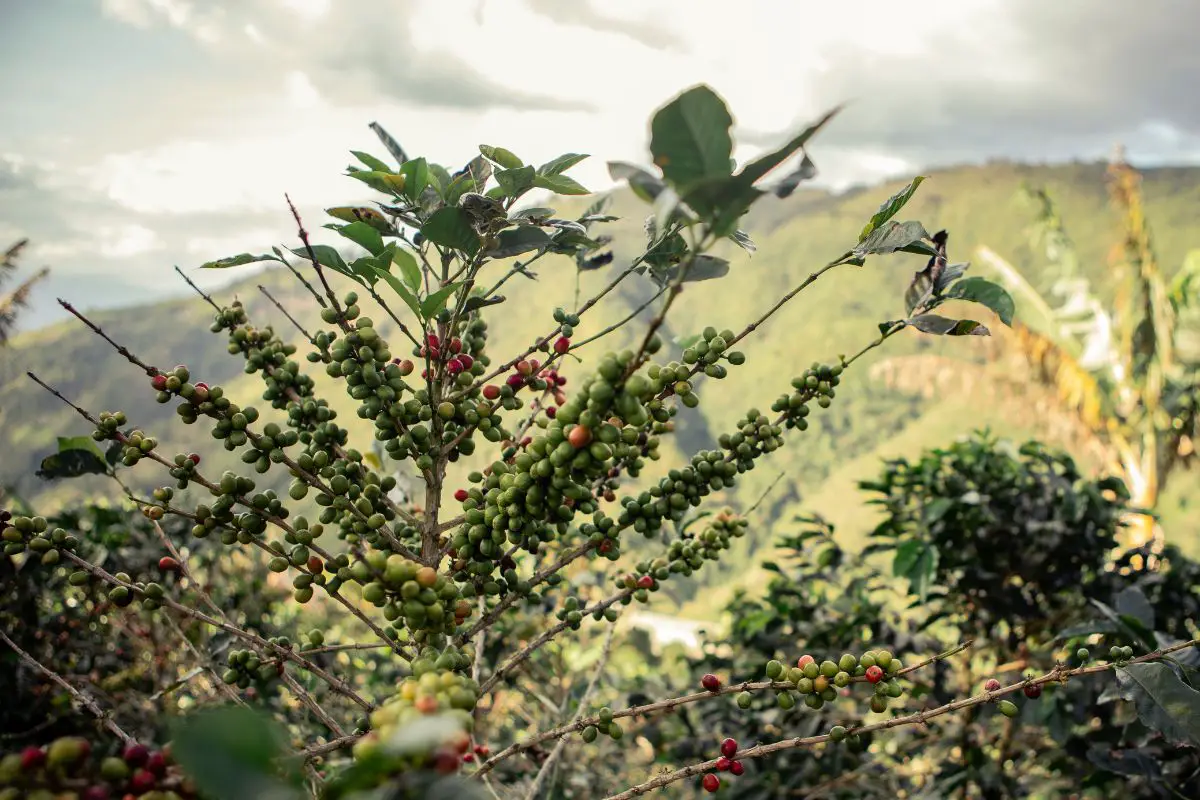With the vast array of coffee beans, roasts, and flavors to choose from it’s hard to narrow down what type you want. Colombia produces a whopping 50% of the world’s coffee beans so let’s take a closer look at two popular types – Colombian & regular coffee.

So what is the difference between Colombian roast and regular coffee? It only makes sense that we compare these brews if we’re trying to decide which one is best for us! We’ll check out taste profiles, how they are made, aroma potentials…you name it!
What Does Colombian Roast Refer to?
Colombian is a unique roast that has the perfect balance of nutty flavor and bright acidity. It refers to any roast made of Colombian beans. It’s roasted for less time at lower temperatures, making it an excellent pick if you’re looking to add some extra oomph to your morning espresso blend. And with its medium or dark roasting options, it can satisfy even the most discerning coffee connoisseur – think of it as a sophisticated cup of java fit for post-work happy hours!
Whether you’re just starting out in specialty brewing or already have years of experience under your belt, there are plenty reasons why this South American brew should be part of any self-respecting barista’s repertoire.
What Makes Colombian Coffee Special?
Colombia is renowned for growing some of the world’s finest coffee beans! The tropical climate and high altitude provide an ideal environment for the plant to thrive under. As a result, Colombia produces plenty of delicious coffee which gets exported all over the globe. Whether you’re looking to try out single-origin Colombian brews or just curious why it tastes so unique – here we’ll explain what makes it so special!
The flavorsome taste and strong aroma are due in part to its near perfect climatic conditions: experiencing heavy rainfall with temperatures that never drop below freezing point coupled with lush mountainous terrain (which stretches from Ecuador along Colombia’s south border up until Venezuela on its northwest).
This gives rise to an abundance of rich soil filled with nutrients – providing exactly what this particular bean needs in order get that delectable flavor profile. In addition, around 200 centimeters of annual rainfall allows for healthy plants; making sure each sip has enough savoriness that will keep you coming back cup after cup.
What Does Colombian Roast Taste Like?
Colombian coffee is a crowd favorite. This delicious brew has all the sweet and nutty notes of Brazilian beans but with an added kick of acidity that will leave your taste buds refreshed, more like biting into a juicy apple or pineapple. Not to mention, it’s balanced enough for mass production – making it ideal when you need espresso or blends in bulk!
What Is the Difference between Colombian Roast and Regular Coffee?
Simply put, regular coffee is coffee made from either Arabica or Robusta beans. The essential distinction between Colombian and Arabica beans lies in their respective places of growth. While the Arabica was originally cultivated in Arabia or today’s Ethiopia, thus explaining its moniker as “Arabica”, Colombia is the sole provider of Colombian coffee.
Although belonging to similar botanical families, these two bean species differ greatly when it comes to environment—Colombia having a more tropical climate compared to that of Arabia. Arabica is grown anywhere around the world under one term: ‘Arabica’. It differs significantly from Robusta beans, which hail from Africa rather than Asia; they mature faster and have bigger yields per plant too! Plus, due largely to its low altitude origin, Robusta is much better able to withstand pests and harsh weather conditions alike. On top of that, Robustas are rounder.
With so many options available, finding a Robusta, Arabica or Colombian bean to suit your budget is no longer an issue. Robusta beans are the most cost-effective option of all three – they require less maintenance and mature faster than their counterparts. Plus, you get more bang for your buck – pound per pound on average, Robusta green beans will only set you back half the price of an Arabica one!
Arabica beans may be pricier due to being grown around the globe but there’s plenty of variety to choose from that won’t break the bank. Meanwhile Colombian coffee tends to come with a higher cost tag as it goes through additional processes during production.
It’s not just about money though; there are lots of other factors that affect pricing too – like climate conditions or soil type – which make each cup unique in its own way! So don’t be afraid to explore different blends and find what suits your taste buds best (while still keeping within budget!).